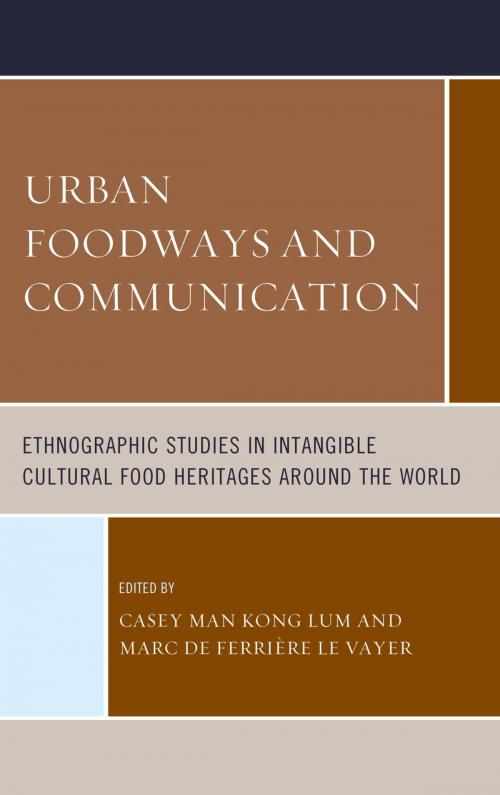Urban Foodways and Communication
Ethnographic Studies in Intangible Cultural Food Heritages Around the World
Nonfiction, Food & Drink, Food Writing, Social & Cultural Studies, Social Science, Cultural Studies, Ethnic Studies, Anthropology| Author: | ISBN: | 9781442266438 | |
| Publisher: | Rowman & Littlefield Publishers | Publication: | May 19, 2016 |
| Imprint: | Rowman & Littlefield Publishers | Language: | English |
| Author: | |
| ISBN: | 9781442266438 |
| Publisher: | Rowman & Littlefield Publishers |
| Publication: | May 19, 2016 |
| Imprint: | Rowman & Littlefield Publishers |
| Language: | English |
Embedded in the quest for ways to preserve and promote heritage of any kind and, in particular, food heritage, is an appreciation or a sense of an impending loss of a particular way of life – knowledge, skills set, traditions -- deemed vital to the survival of a culture or community. Foodways places the production, procurement, preparation and sharing or consumption of food at an intersection among culture, tradition, and history. Thus, foodways is an important material and symbolic marker of identity, race and ethnicity, gender, class, ideology and social relations.
Urban Foodways and Communication seeks to enrich our understanding of unique foodways in urban settings around the world as forms of intangible cultural heritage. Each ethnographic case study focuses its analysis on how the featured foodways manifests itself symbolically through and in communication. The book helps advance our knowledge of urban food heritages in order to contribute to their appreciation, preservation, and promotion.
Embedded in the quest for ways to preserve and promote heritage of any kind and, in particular, food heritage, is an appreciation or a sense of an impending loss of a particular way of life – knowledge, skills set, traditions -- deemed vital to the survival of a culture or community. Foodways places the production, procurement, preparation and sharing or consumption of food at an intersection among culture, tradition, and history. Thus, foodways is an important material and symbolic marker of identity, race and ethnicity, gender, class, ideology and social relations.
Urban Foodways and Communication seeks to enrich our understanding of unique foodways in urban settings around the world as forms of intangible cultural heritage. Each ethnographic case study focuses its analysis on how the featured foodways manifests itself symbolically through and in communication. The book helps advance our knowledge of urban food heritages in order to contribute to their appreciation, preservation, and promotion.















